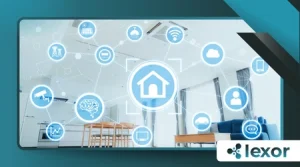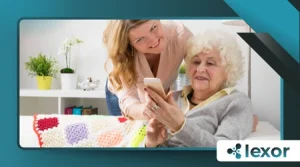How Smart Homes Improve Accessibility for Seniors

In an era where technology permeates every aspect of life, smart homes improve accessibility for seniors by offering tailored solutions that enhance independence, safety, and comfort.
As the global population ages rapidly, the demand for accessible living environments grows exponentially.
Smart home automation is no longer a futuristic concept but a practical, everyday tool that empowers older adults to live with dignity and confidence in their own homes.
The benefits of smart homes go far beyond convenience. They address critical challenges seniors face, such as mobility limitations, health monitoring, and social isolation.
This comprehensive approach transforms homes into adaptive spaces that respond intuitively to the needs of their residents.
But how exactly do these technologies work in practice? And what impact do they have on seniors’ quality of life?
This article explores the multifaceted ways smart homes improve accessibility for seniors, combining real-world examples, research-backed data, and practical insights.
By understanding these dynamics, families, caregivers, and policymakers can better support aging populations through innovative, empathetic solutions.
The Growing Need for Accessible Living and Smart Home Solutions
The demographic shift toward an older population is undeniable. By 2025, the number of people aged 60 and above is projected to surpass 1.2 billion worldwide.
This surge intensifies the urgency for homes that accommodate the physical and cognitive changes that come with aging.
Traditional housing often falls short in meeting these evolving needs, leading to increased risks of accidents, social isolation, and health complications.
Smart home technology offers a proactive answer. It creates environments that not only mitigate risks but also enhance daily living.
For example, automated lighting systems can illuminate hallways as seniors move at night, significantly reducing fall hazards.
Voice-activated devices eliminate the need to physically operate switches or appliances, which is especially beneficial for those with arthritis or limited dexterity.
Moreover, the integration of health monitoring devices within smart homes allows for continuous tracking of vital signs and activity levels.
++How Blockchain Works in Real Life: Use Cases
This real-time data can alert family members or healthcare providers in case of emergencies, such as falls or irregular heart rates, ensuring timely assistance.
The ability to age in place safely and comfortably is a game-changer for many seniors, preserving their independence and emotional well-being.
How Smart Homes Improve Accessibility for Seniors: Key Features and Benefits

Smart homes designed for seniors incorporate a range of technologies that collectively create a supportive living environment.
These features address mobility, health, safety, and daily convenience, forming a holistic system that adapts to individual needs.
Mobility and Safety Enhancements
One of the most critical aspects of accessibility is safe mobility within the home. Falls remain the leading cause of injury among seniors, often resulting in hospitalization or long-term disability.
Smart lighting systems equipped with motion sensors automatically brighten pathways when movement is detected, preventing accidents in dark or cluttered areas.
++The Role of Voice Assistants in Smart Homes
Voice-activated assistants allow seniors to control lights, doors, and appliances without physical strain.
For instance, a senior with limited hand mobility can simply say, “Turn on the kitchen light,” or “Lock the front door,” reducing frustration and enhancing autonomy.
Health Monitoring and Emergency Response
Wearable devices and embedded sensors monitor vital signs such as heart rate, blood pressure, and oxygen levels.
When integrated with the home’s network, these devices can trigger alerts if abnormalities or emergencies occur.
For example, if a fall is detected, the system can automatically contact emergency services and notify designated family members.
++Home Security: The Best Smart Home Devices for 2025
This continuous monitoring not only provides peace of mind but also enables early intervention, potentially preventing more severe health issues.
The International Journal of Older People Nursing published a 2022 study confirming that seniors using smart home technology reported significant improvements in their sense of security and well-being.
Daily Living Assistance and Cognitive Support
Smart homes also simplify routine tasks. Automated reminders for medication, appointments, and hydration help seniors maintain their health regimens.
Smart kitchen appliances can be programmed to shut off automatically, reducing the risk of accidents caused by forgetfulness.
For seniors experiencing mild cognitive decline, these systems offer gentle prompts and structure. For example, a smart assistant might remind a resident to take their medication at a specific time or alert them if the stove has been left on for too long.
Security and Social Connectivity
Security features such as smart locks and video doorbells enhance safety by allowing seniors to verify visitors without opening the door.
Remote monitoring capabilities enable family members to check in discreetly, fostering connection without infringing on privacy.
Social isolation is a major concern for seniors, often linked to depression and declining health.
Smart home systems can facilitate communication through voice or video calls, helping seniors stay connected with loved ones and caregivers effortlessly.
Practical Examples of Smart Homes Enhancing Senior Accessibility
Consider the case of Robert, a 78-year-old with limited mobility due to arthritis. His smart home is equipped with voice-activated lighting and climate control, allowing him to adjust his environment without physical effort.
Automated door locks and video doorbells provide security and convenience, while health sensors monitor his vital signs and send alerts to his daughter if needed.
Robert’s experience exemplifies how technology can restore independence and peace of mind.
Another example is Grace, an 85-year-old living alone who benefits from a smart medication dispenser and fall detection system.
Her home’s automated lighting guides her safely at night, and her wearable device communicates with emergency responders if she falls.
Grace’s family can monitor her well-being remotely, ensuring she receives support while maintaining her autonomy.
These stories illustrate the tangible impact of smart home automation on seniors’ lives, transforming challenges into manageable experiences.
Overcoming Barriers to Adoption and Looking Ahead
Despite the clear advantages, some seniors face obstacles in adopting smart home technology.
Cost remains a significant barrier, although prices have been steadily decreasing. Additionally, perceived complexity can deter older adults unfamiliar with digital interfaces.
To address these challenges, manufacturers are focusing on user-friendly designs and voice-activated controls that require minimal technical knowledge.
Community programs and government incentives also play vital roles in expanding access.
Looking forward, the integration of smart homes with telehealth services promises to further enhance care.
Homes will become comprehensive wellness hubs, supporting not only physical health but also mental and social well-being.
The future of aging is one where technology and humanity converge to create environments that nurture, protect, and empower.
For those interested in exploring smart home options, the AARP Smart Home Guide offers valuable, senior-focused advice on selecting and implementing these systems.
Conclusion: Embracing Technology to Empower Aging
The narrative around aging is evolving. Smart homes improve accessibility for seniors by transforming living spaces into adaptive, intelligent environments that promote independence, safety, and connection.
These technologies are not mere luxuries but essential tools that respond to the realities of aging with empathy and innovation.
As society continues to age, embracing smart home automation represents a commitment to dignity and quality of life for older adults.
The integration of health monitoring, mobility support, and security within the home creates a foundation for aging in place with confidence.
Are we ready to harness this potential fully? The answer lies in collaboration among families, healthcare providers, technologists, and policymakers to ensure these innovations reach those who need them most.
For further insights on the intersection of technology and aging, visit the National Institute on Aging for authoritative resources and research.
Smart homes improve accessibility for seniors in profound ways, offering a future where aging is not a limitation but a stage of life enriched by technology, compassion, and empowerment.
Frequently Asked Questions (FAQs)
Q1: How expensive is it to convert a traditional home into a smart home for seniors?
Costs vary widely depending on the technologies installed. Basic systems like smart lighting and voice assistants can start around a few hundred dollars, while comprehensive setups with health monitoring and security may cost several thousand. However, prices are decreasing as technology advances.
Q2: Are smart home devices difficult for seniors to use?
Modern devices prioritize simplicity and voice control, minimizing the need for complex interactions. Many seniors adapt quickly, especially with initial training and support.
Q3: Can smart homes detect emergencies like falls?
Yes, many smart homes integrate wearable sensors or floor sensors that detect falls and automatically alert emergency contacts or services.
Q4: Do smart homes invade seniors’ privacy?
Privacy concerns are valid, but reputable systems offer customizable settings that balance monitoring and independence. Family members can receive alerts without constant surveillance.
Q5: Where can I find reliable information about smart home technology for seniors?
Trusted resources include the AARP Smart Home Guide and the National Institute on Aging.
This detailed exploration demonstrates how smart homes improve accessibility for seniors by integrating technology with compassionate design, ultimately reshaping the experience of aging for the better.
